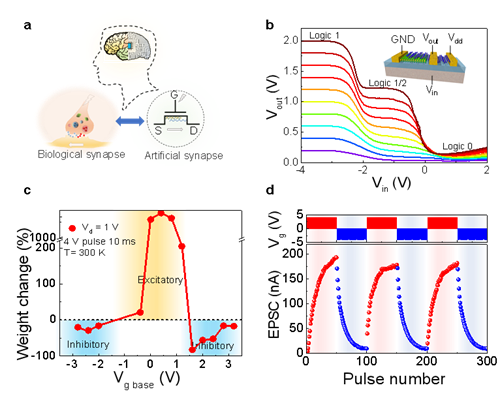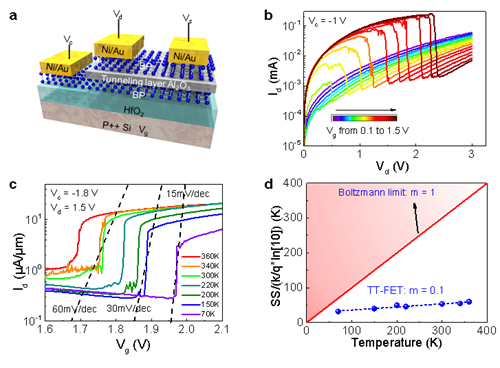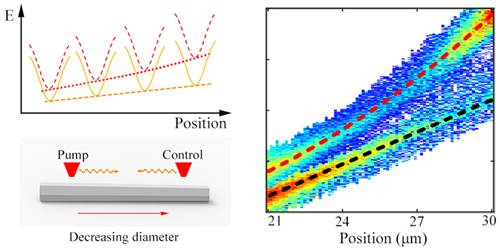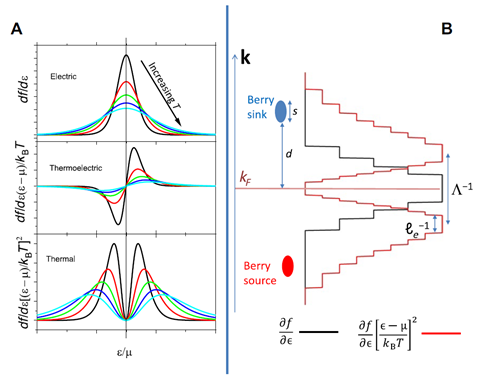http://news.hust.edu.cn/info/1002/38907.htm
During the COVID-19 pandemic, Wuhan National High Magnetic Field Center (WHMFC) conscientiously implemented policy decisions of the CPC Central Committee, government and university, to prevent and control the pandemic. During the home quarantine period, teachers and students in WHMFC reasonably planned the work and study time and actively launched scientific research. In the first 4 months of 2020, a series of important research progress has been made. Besides, the high-level research achievements have been further improved compared with those during the same period in 2019.

Figure1

Figure 2
On January 31 and February 3, Advanced Functional Materials and Nature Electronics successively published research papers on two-dimensional van der Waals heterojunction by the center’s research group of Micro and Nano Electronic devices. In the paper "Reconfigurable logic-in-memory and multilingual artificial synapses based on 2D heterostructures", two-dimensional van der Waals heterostructure based on two-dimensional semiconductor black phosphorus and rhenium disulfide is used to realize non-volatile ternary logic computing devices (Figure 1), in which the ultra-thin oxide layer at the black phosphorus interface plays the role of capturing charge and storing information, providing a way for multifunctional non-volatile memory and logic applications based on a novel two-dimensional heterostructure. In another paper "A transverse tunnelling field-effect transistor made from a van der Waals heterostructure", an efficient tunneling device made of two-dimensional black phosphorus /Al2O3/ black phosphorus structure (Figure 2) is proposed. The peak-to-valley ratio can exceed 100 at room temperature, and can achieve ultra-steep sub-threshold slope in the temperature range of 360 K to 70 K. The device also exhibits abrupt switching, with a body factor (the relative change in gate voltage with respect to that of the surface potential) that is one-tenth of the Boltzmann limit for conventional transistors across a wide temperature range.

Figure 3
On February 25, Nano Letters published online a research paper on the fundamental physical properties of exciton-polaritons “Polariton–Polariton Interactions Revealed in a One-dimensional Whispering Gallery Microcavity” by Associate Professor Zhou Weihang’s team of the center. The research used the unique half-light half-matter nature of exciton-polaritons and their Bose-Einstein condensation effect to accurately measure the interaction constant of the exciton-polariton system (Figure 3). Spectacularly, the investigations revealed that the polariton–polariton coulomb interaction strength is up to 2 orders of magnitude larger than theoretical predictions. Moreover, the phenomenon of ballistic transport and mechanical energy conservation of the peculiar particles of exciton-polaritons is also observed. These results are of great significance to study the abundant physical properties of exciton-polaritons and develop their potential applications in the field of new generation optoelectronic devices.

Figure 4
On March 9th, Physical Review Letters published the research paper of PhD student Li Xiaokang in the Class of 2016 (mentor: Professor Zhu Zengwei) on the phonon thermal Hall effect of nonmagnetic insulators. The paper is entitledPhonon Thermal Hall Effect in Strontium Titanate. This study observed a larger Hall thermal conductivity in nonmagnetic insulator SrTiO3 than any other insulator. At the same time, by selecting SrTiO3 and its analogue KTaO3 to carry out comparative experiments, the origin mechanism of phonon thermal Hall effect is discussed. It is found that SrTiO3 has a giant thermal Hall effect, while the thermal conductivity of KTaO3 is almost zero. It is confirmed that the domain wall of SrTiO3 after the antiferroelectric distortion (AFD) transition may be the cause of the lateral deflection of scattered phonons (Figure 4).

Figure 5
On April 24, Science Advances published online a research paper on anti-ferromagnetic materials “Finite-temperature violation of the anomalous transverseWiedemann-Franz (WF) law” by Professor Zhu Zengwei’s team of the WHMFC. In the research, a study of anomalous Hall effect and thermal Hall effect of noncollinear antiferromagnetMn3Geextended from room temperature down to sub-kelvin temperature is presented. It is it is found that the anomalous transverse WF law is also valid at a low temperature, but it is not consistent at a high temperature. Therefore, a new mechanism is proposed to explain the deviation of WF law inMn3Ge.The interpretation is backed by theoretical calculations, which reveals a competition between the temperature and the Berry curvature distribution (Figure 5).
In recent years, relying on the Pulsed High Magnetic Field Facility (National Major Science and Technology Infrastructure), WHMFC has attracted a group of high-level young scholars to join. The number of candidates for the national talent programs at all levels is up to 44%, and professors account for nearly 60%. With the rapid development of research teams, the original achievements of the center are constantly emerging, making it become one of the important research centers ininternational high magnetic field. Through continuous improvement of facility performance and open operation level, the center completed 11,649 effective machine hours in 2019 alone, 1.5 times that of similar facilities abroad, greatly enhancing China's cutting-edge research capability in high magnetic field. So far, it has provided 1,157 research services to 93 research institutions including Peking University, Tsinghua University, Harvard University and Cambridge University, etc. Moreover, it published 835 papers in journals such as Nature and Science, including the new quantum oscillation phenomenon of the third law discovered by Academician Xie Xincheng of Peking University in the quantum field in the past 90 years, as well as two-dimensional superconductor with the highest critical current density discovered by Academician Xue Qikun of Tsinghua University. The Center has strongly supported the development of many basic frontier disciplines in China such as physics, chemistry, materials, formed a "high magnetic field" that gathered top scientific research teams, and continuously produced high-level original research achievements.
Linkage:
https://advances.sciencemag.org/content/6/17/eaaz3522
https://onlinelibrary.wiley.com/doi/10.1002/adfm.201909645
https://www.nature.com/articles/s41928-019-0364-5
https://pubs.acs.org/doi/abs/10.1021/acs.nanolett.9b04121
https://journals.aps.org/prl/abstract/10.1103/PhysRevLett.124.105901